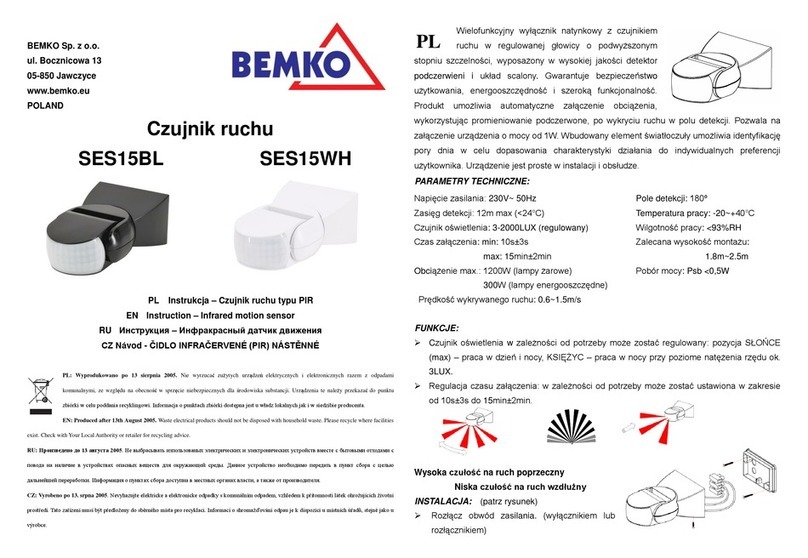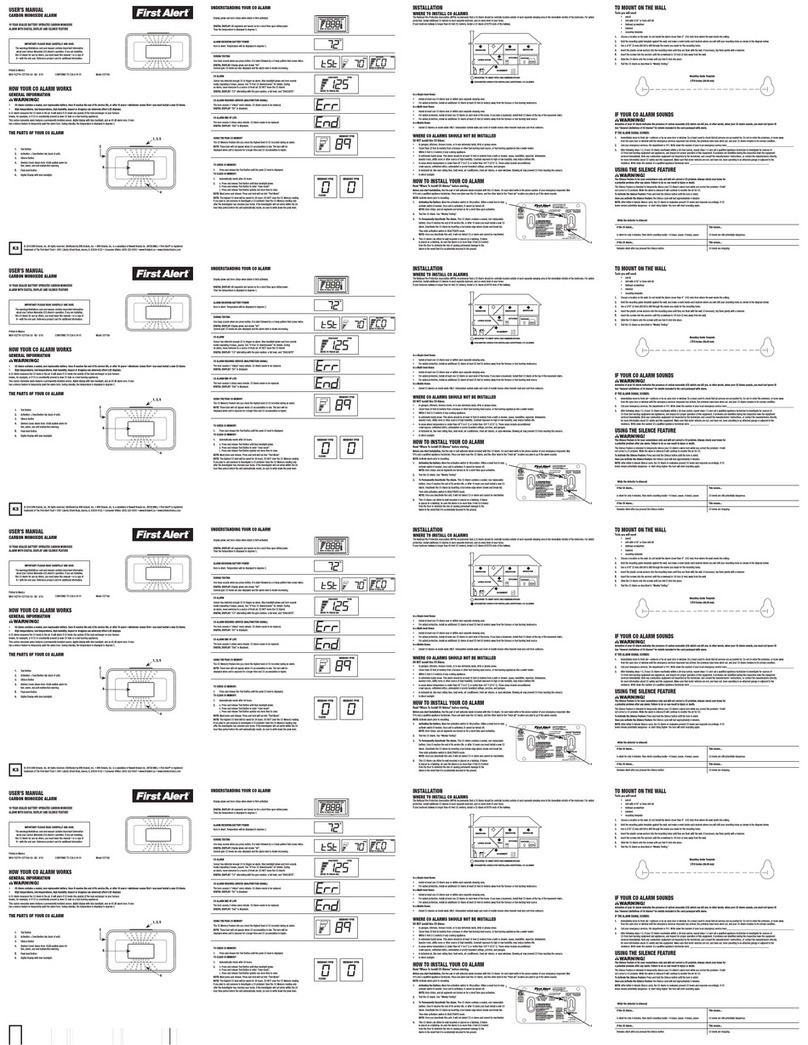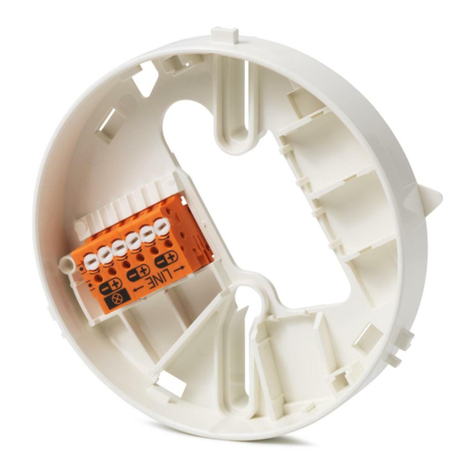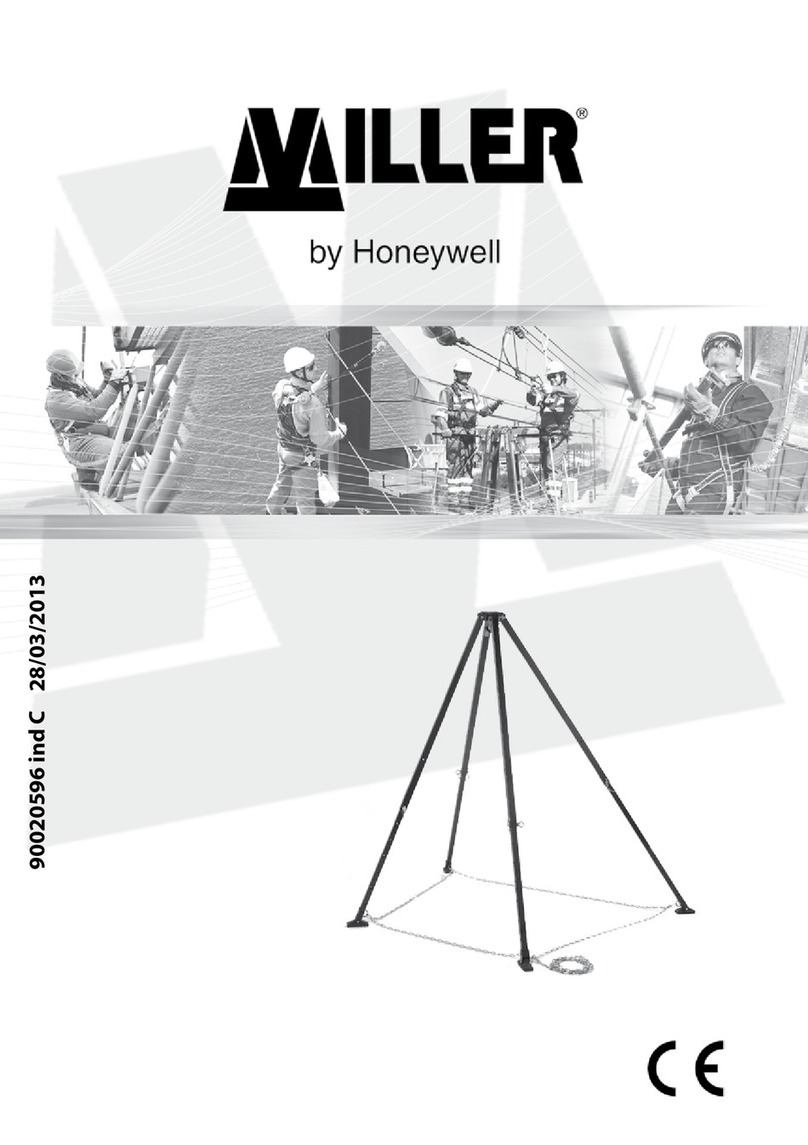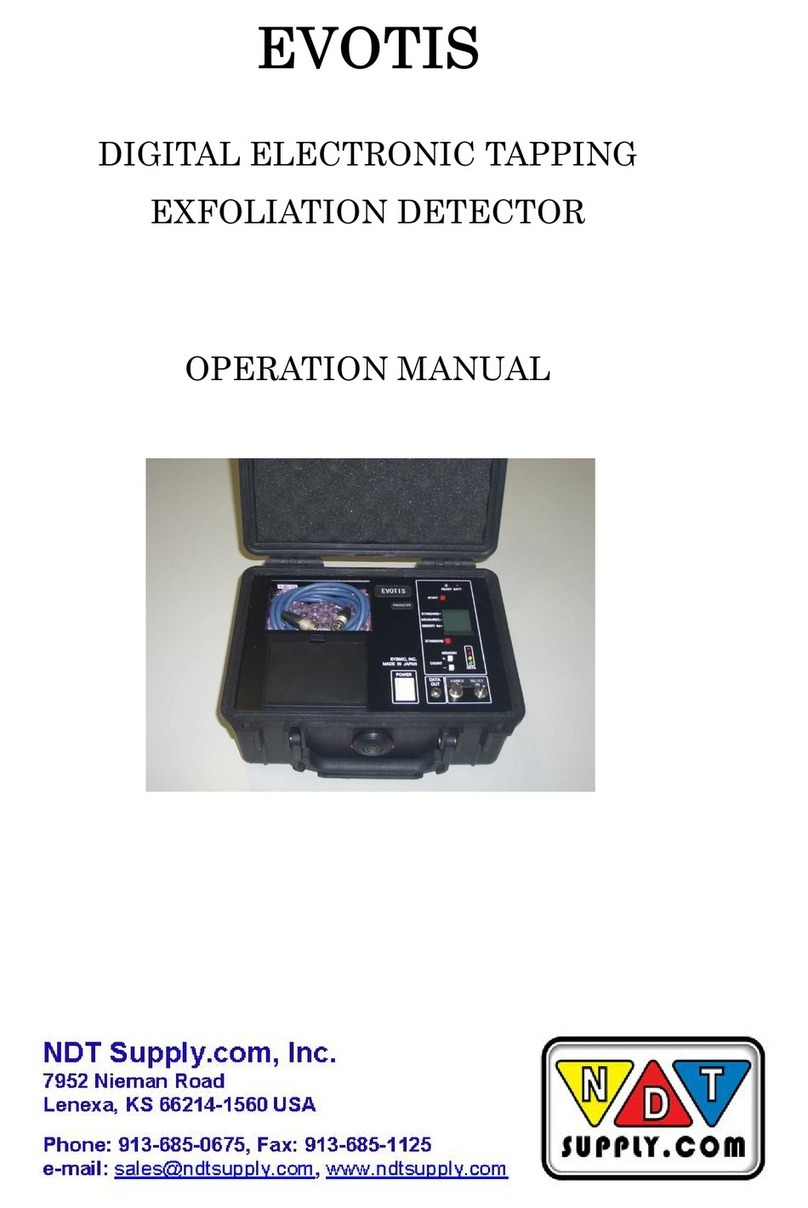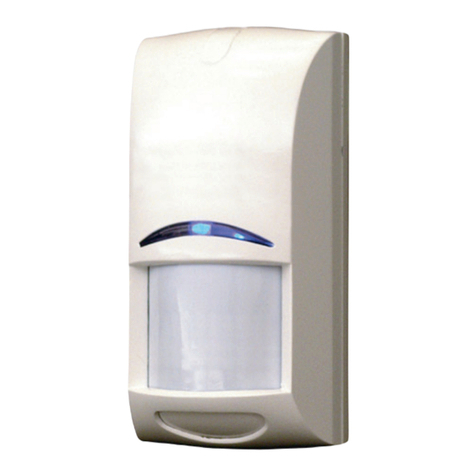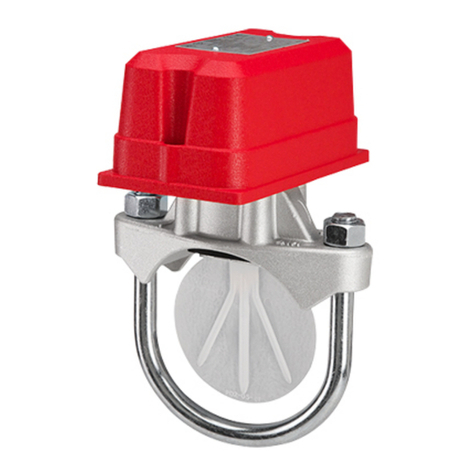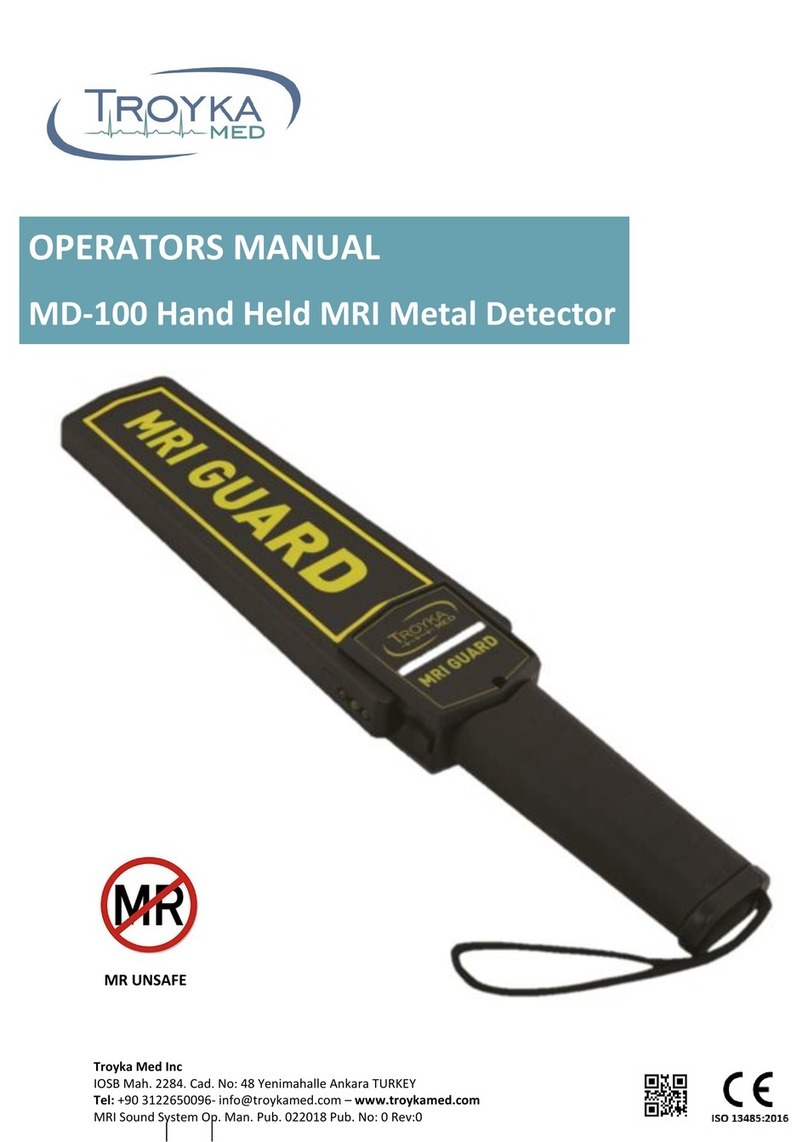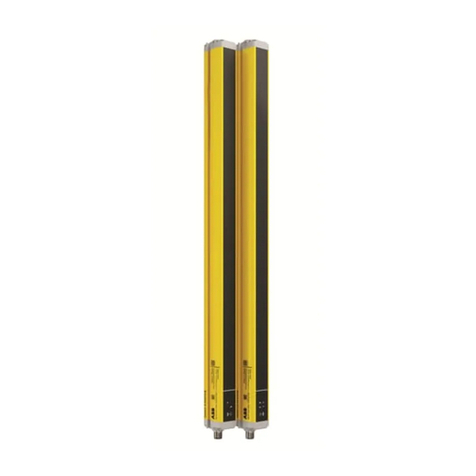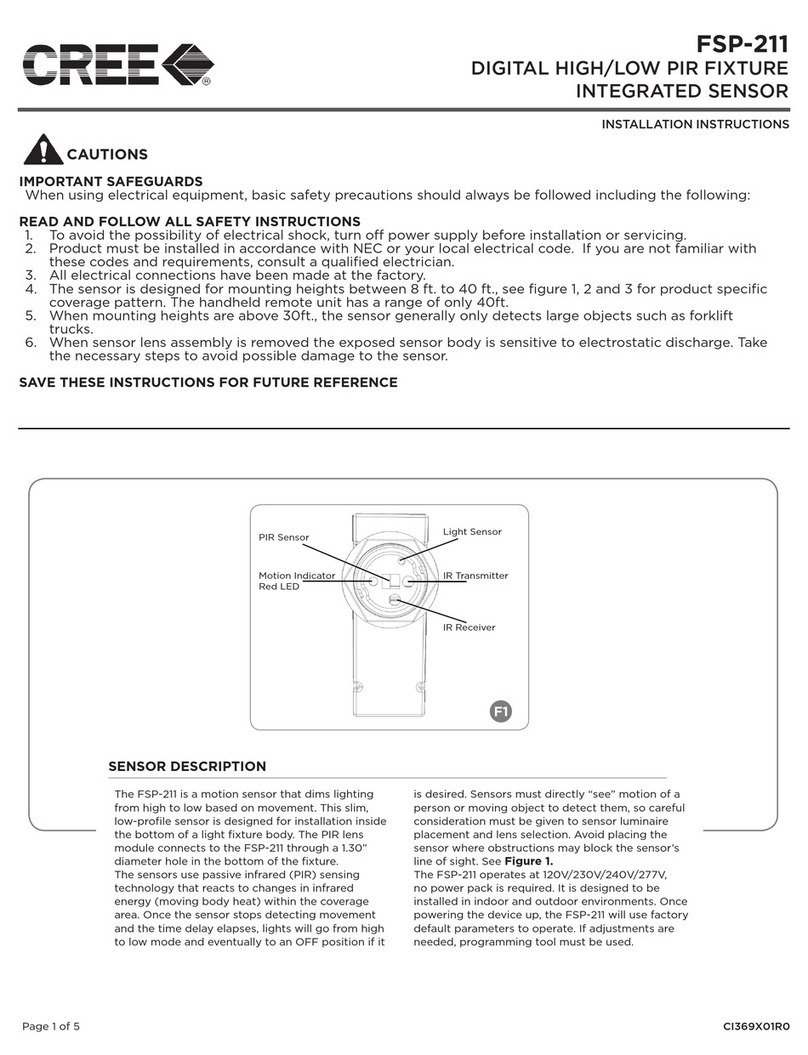Gemtor FLW Series User manual

GEMTOR
. . . when your life is on the line
Gemtor, Inc. • One Johnson Avenue • Matawan, NJ 07747
Phone: 732-583-6200 • 800-405-9048 • Fax: 732-290-9391
TM
OWNER'S MANUAL
FLW Series Self-Retracting Lanyard/Fall Limiter
Installation, Operating, Inspection and Maintenance Instructions
Warning
You must read and fully understand all instructions, or have all
instructions
explained to you, before attempting to use this device.
Equipment must not be installed, operated or inspected by anyone
who does not understand this Owner's Manual. Failure to observe
these instructions could result in serious injury or death. Careless
or improper use of this equipment can result in serious injury or
death. Training and instruction review should be repeated at regular
intervals. If you have any questions regarding these instructions or
need additional copies, call Gemtor toll free at 800-405-9048.
IMPORTANT: THESE INSTRUCTIONS SHOULD BE KEPT
WITH THE DEVICE AT ALL TIMES.

Rev. 10-11-04
©Copyright 2004 Gemtor, Inc.
Page 2 of 8
IMPORTANTINFORMATION:
Purchased from (Distributor):______________________________________
Address: ______________________________________
______________________________________
City: _________________ State______ Zip_______
Purchase Date:_________________
Model Number:_________________
Serial Number: _________________
Property of:
_______________________________________
_______________________________________
_______________________________________
_______________________________________
_______________________________________
Keep this information for future reference.
IMPORTANT: Return registration card immediately

Rev. 10-11-04
©Copyright 2004 Gemtor, Inc.
Page 3 of 8
DESCRIPTION:
The Sentry FLW is a personal fall protection device with 10 ft. of 1” wide polyester
or Technora aramid webbing, on a spring-wound drum with a centrifugal braking
system in a weather-sealed cast aluminum housing. The device allows maximum
freedom of movement and stops a worker within 2 feet if a fall occurs.
Gemtor Sentry Self-Retracting Lanyards are part of a complete fall protection
system which should consist of:
1) An anchorage point meeting OSHA requirements for retracting lanyards.
Anchorages used for attachment of personal fall arrest equipment
shall be independent of any anchorage being used to support or
suspend platforms and capable of supporting at least 5,000 pounds
(22,2 kN) per employee attached [OSHA 1926.502(d)(15)]
2) A locking type connector to mount the Sentry device to the anchorage point.
3) A Sentry FLW Self-Retracting Lanyard.
4) A full-body harness with attachment point located in the center of the back at
shoulder level. A front attachment point may also be used when ascending
or descending a vertical fixed ladder.
AVAILABLEMODELS:
FLW-11.................... Self-Retracting lanyard w/ 10 feet of polyester webbing.
FLW-11T.................. Self-Retracting Lanyard w/ 10 feet of Technora aramid
webbing.
SPECIFICATIONS:
Model # FLW-11 FLW-11T
Maximum Work Load 310 lbs. 310 lbs.
Lanyard Length 10' 10'
Lanyard Width 1" 1"
Lanyard Strength 4000 lbs. 4500 lbs.
Lanyard Material Polyester Technora
Housing Material
painted cast
aluminum
painted cast
aluminum
Brake Activation Speed 4.5 ft./sec. 4.5 ft./sec.
Arresting Force < 700 lbs. < 700 lbs.
Deceleration Distance ≈12" ≈ 12"
Weight 3 lbs. 3 lbs.
INSTALLATION:
1) To minimize the possibility of a swing fall hazard, install the device directly over
the work area.
2) Attach the device to the anchor point (must meet OSHA requirements) using a
locking connector.
3) Attach the locking snaphook at end of lanyard to the D-ring on the back of the
harness. The D-ring must be in center of wearer's back at or above shoulder
level.

Rev. 10-11-04
©Copyright 2004 Gemtor, Inc.
Page 4 of 8
TRAINING:
The employer shall provide a training program for each employee who might be
exposed to fall hazards. The program shall enable each employee to recognize
the hazards of falling and shall train each employee in the procedures to be
followed in order to minimize these hazards.[OSHA 1926.503(a)(1)]
The employer shall assure that each employee has been trained, as necessary,
by a competent person qualified in the following areas:
(I) The nature of fall hazards in the work area;
(ii) The correct procedures for erecting, maintaining, disassembling, and
inspecting the fall protection systems to be used;
(iii) The use and operation of guardrail systems, personal fall arrest systems,
safety net systems, warning line systems, safety monitoring systems, controlled
access zones, and other protection to be used;
(iv) The role of each employee in the safety monitoring system when this system
is used;
(v) The limitations on the use of mechanical equipment during the performance of
roofing work on low-sloped roofs;
(vi) The correct procedures for the handling and storage of equipment and
materials and the erection of overhead protection; and
(vii) The role of employees in fall protection plans;
(viii) The standards contained in this subpart.[OSHA1926.503(a)(2)]
The employer shall verify compliance with paragraph (a) of this section by
preparing a written certification record. The written certification record shall
contain the name or other identity of the employee trained, the date(s) of the
training, and the signature of the person who conducted the training or the
signature of the employer. If the employer relies on training conducted by another
employer or completed prior to the effective date of this section, the certification
record shall indicate the date the employer determined the prior training was
adequate rather than the date of actual training.[OSHA 1926.503(b)(1)]
INSPECTION:
ENERGY ABSORBER
An energy absorber pack has been supplied as an integral part of your self-
retracting lanyard. It is located at the end of the lanyards webbing, just above the
locking snaphook. The energy absorber reduces the possibility of the lanyard
being overloaded. When used according to these instructions the energy
absorber will elongate approximately 6 inches or less. If the unit is subjected to
unusually high forces caused by overloading or improper use that leads to a
freefall then the energy absorber may expand up to 42”. Then energy absorber
also serves as a stress indicator. Any elongation of the energy absorber is
evidence that the unit has seen impact forces and should be removed from
service and returned to Gemtor for repair and/or recertification.
BEFORE EACH USE
Inspect the entire fall arrest unit for any indication of damage, wear or malfunction
to include but not limited to, worn webbing or damaged locking snaphook.
Remove from service immediately if the unit is damaged, has been subjected to a
fall, does not pass inspection, the energy absorber has been activated or if the
unit has not been inspected by a competent person within the last 12 months
(shorter inspection intervals should be used if the unit is subjected to harsh
conditions).

Rev. 10-11-04
©Copyright 2004 Gemtor, Inc.
Page 5 of 8
Inspect work area:
Inspect and clear the vicinity around the work area of debris and other materials
that could cause injuries or interfere with the operation of the device.
Check webbing:
Pull all of the webbing out of the housing and allow it to retract slowly under light
tension. While the webbing is retracting, check for cuts, knots, broken stitching,
excessive wear, foreign substances or other damage.
Check locking mechanism:
Pull approximately two (2) feet of webbing out of the housing and give it a quick
hard tug. The device should lock and remain locked until you release the
webbing.
Check webbing retraction before each use:
Pull approximately four (4) feet of webbing out of the housing and allow it to
retract; maintain slight tension on webbing. The webbing should retract smoothly
and completely. Do not allow webbing to retract freely.
Inspect snaphooks and connecting hardware:
Snaphooks and connecting hardware shall not be distorted or have any sharp
edges, burrs, cracks, worn parts or corrosion. The snaphook keeper spring shall
provide tension to close the keeper in the locked position.
DO NOT attempt to adjust, repair or modify Sentry Self-Retracting Lanyards; for
prompt repair, reconditioning or recertification, return the unit to Gemtor Inc.,
prepaid.
OperatingInstructions:
The Sentry shall be mounted to an overhead anchor point which meets OSHA
requirements for retracting lanyards. The worker shall use a full-body harness
with a D-ring in the center of the wearer's back near shoulder level.
Attachment points, connectors and other equipment must meet applicable OSHA
and ANSI standards.
The unit releases webbing out as the worker moves to allow maximum freedom of
movement and automatically retracts to reduce the possibility of free fall injury
caused by slack webbing. In the event of a fall, a centrifugal brake mechanism is
activated, and the fall is arrested within 12 inches*.
Always allow lanyard to retract completely when not in use. Use a tag-line to pull
lanyard out of housing that is connected to anchorage too high for the worker to
reach.
Equipment must be inspected before each use; if bent, damaged, if parts have
been substituted or if operation is questionable in any way, DO NOT USE.
Return to Gemtor for reconditioning or repair.
* 12” arrest distance includes brake engagement distance and energy absorber
extension (deceleration distance). This distance may be greater if these
instructions are not followed or the rated capacity is exceeded. When using
with a Gemtor horizontal lifeline system (HL1, HL2 or HL3) with integral energy
absorbing components, use 12” stop distance to calculate minimum clearance.

Rev. 10-11-04
©Copyright 2004 Gemtor, Inc.
Page 6 of 8
Inspectionpolicy:
To help reduce down-time related to Self-Retracting Lanyards (SRL)
recertification, we have revised our policy to allow for employer level inspection.
Although annual factory recertification is still the best way to ensure that your SRL
is operating within original factory specifications, a thorough inspection and
maintenance program may be used if the following conditions are met:
•The SRL has been in your control since its last factory recertification.
•You can ensure that it has not been exposed to any conditions that would
lead to excessive internal corrosion, wear or damage that may result in
product failure.
•OSHA and ANSI standards regarding maintenance and inspection have
been followed.
•All instructions supplied with the SRL at the time of purchase regarding
maintenance, inspection and product use have been followed.
•The unit has not been subjected to impact forces.
•The SRL is deemed to be in good working condition by the employer
appointed Competent Person.
IMPORTANT: The unit must be returned to the factory if it is subjected to
impact forces or if it does not pass user or competent
person inspection.
Both OSHA and ANSI require an inspection by the user before each use and
ANSI also requires an additional inspection by a Competent Person other than
the user at intervals of no more than one year.
OSHA and ANSI define a Competent Person as:
One who is capable of identifying existing and predictable hazards in the
surroundings and working conditions that are unsanitary, hazardous or
dangerous to employees, and who has the authority to take prompt
corrective measures to eliminate such hazards.
ANSI Z359.1 E6.1.1 The purpose of two-level inspection of equipment is to
provide two independent means for guarding against oversight in the detecting
and controlling against the use of defective, damaged and improperly maintained
equipment. If such equipment conditions are observed by the competent person's
inspection, measures should be taken to provide the user with additional training
or retraining in equipment inspection, maintenance, use and storage. Such
observations may also suggest the need for election of alternative equipment
more suitable for the conditions of use. The frequency of periodic inspection by a
competent person should be established by the user's organization based upon
careful consideration of relevant factors. Such factors include the nature and
severity of workplace conditions affecting the equipment and the modes of use
and exposure time of the equipment.
Only original Gemtor replacement parts are approved for use in this device.

Rev. 10-11-04
©Copyright 2004 Gemtor, Inc.
Page 7 of 8
WARNINGS:
DO NOT USE IF:
The device appears to be damaged.
The webbing is worn or partially cut.
The locking snap hook does not function properly.
The webbing does not retract properly.
The device does not lock and stop the webbing.
The unit has arrested a fall.
The energy absorber has elongated.
The unit has not inspected by a competent person within the last 12
months
•DO NOT attempt to adjust, repair or modify Sentry Self-Retracting
Lanyards; for prompt repair or reconditioning, return the unit to
Gemtor Inc., prepaid.
•NEVER ALLOW WEBBING TO RETRACT FREELY.
•DO NOT use steel cable near electrical lines or equipment.
•DO NOT attach more that one worker to the device.
•DO NOT use for lifting or towing.
•DO NOT use as a work positioning device.
•DO NOT attach anything to the snaphook at the end of the
retractable lanyard to extend its length beyond its designed length.
•NEVER clamp off or stand on webbing nor allow webbing to
become slack during use.
•NEVER allow webbing to cross under or wrap around the legs,
arms, neck or torso of the user or other workers.
•NEVER work above the anchor point.
•ALWAYS work directly under the anchor point. Worker must be
vertically in line with device to avoid swing-fall injuries (pendulum
effect).
ALWAYS rig to allow a minimum of 3 ft. clearance to the next lower
level or obstructions below.
IF YOU HAVE ANY QUESTIONS CONCERNING THE CORRECT
USAGE OF THIS OR ANY GEMTOR PRODUCT, DO NOT USE,
CALL (TOLL FREE) 1-800-405-9048
Do not try to adjust, repair or modify Gemtor Self-Retracting Lanyards; for
prompt service, please contact:
GEMTOR, INC.
One Johnson Avenue
Matawan, NJ 07747
732-583-6200

Rev. 10-11-04
©Copyright 2004 Gemtor, Inc.
Page 8 of 8
INSPECTIONLOG:
NOTES:
_____________________________________________________________
_____________________________________________________________
_____________________________________________________________
_____________________________________________________________
_____________________________________________________________
_____________________________________________________________
_____________________________________________________________
_____________________________________________________________
_____________________________________________________________
_____________________________________________________________
This manual suits for next models
2
Table of contents
Popular Security Sensor manuals by other brands
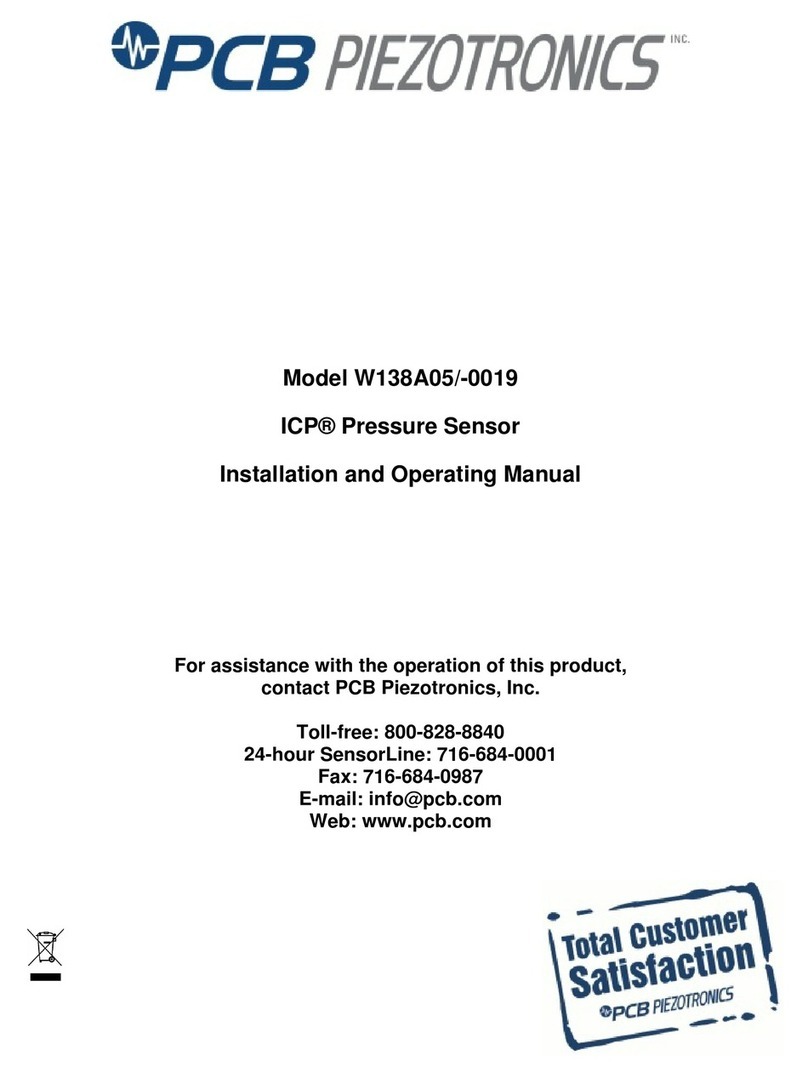
PCB Piezotronics
PCB Piezotronics ICP W138A05/-0019 Installation and operating manual
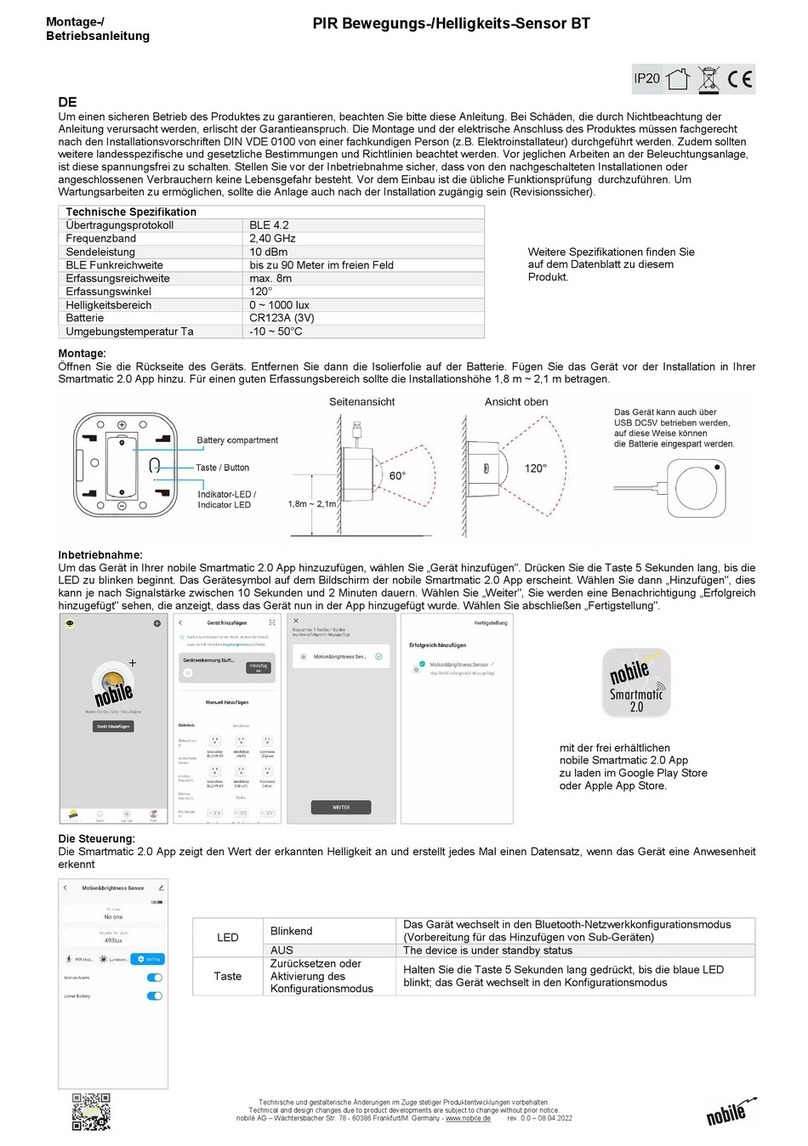
Nobile
Nobile 9109011004 Mounting and operation instructions
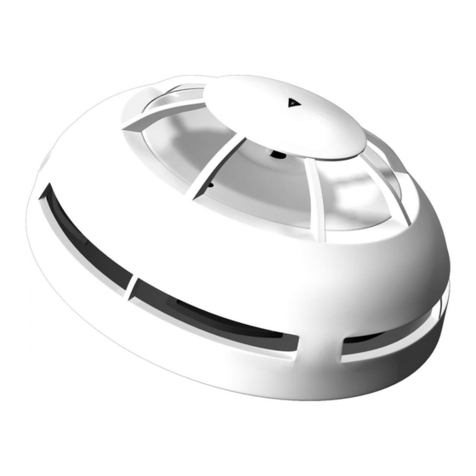
INIM
INIM Aurora S3500 installation instructions
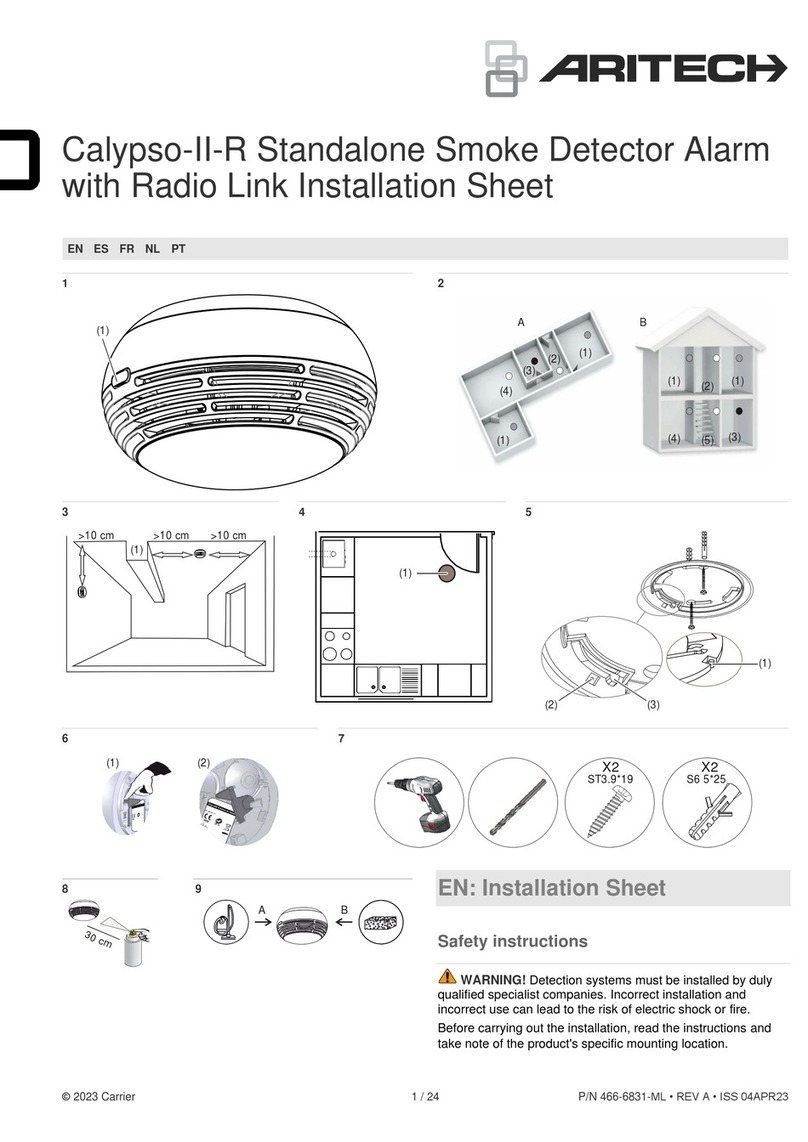
Aritech
Aritech Calypso-II-R Installation sheet
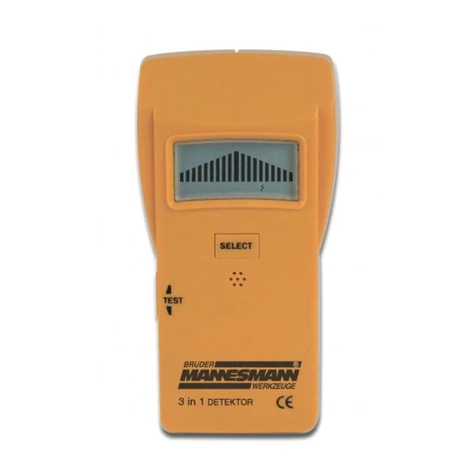
Mannesmann
Mannesmann 99980 instruction manual
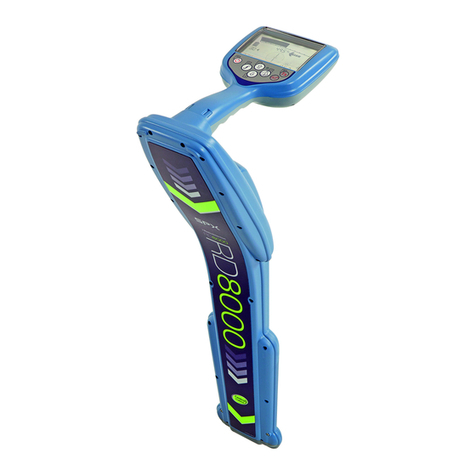
Radiodetection
Radiodetection RD8000 Quick Locating Guide
